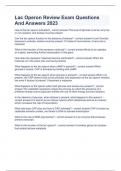Tentamen (uitwerkingen)
NURS 328 Quiz 1 Peds Questions With Complete Solutions.
- Vak
- Instelling
Physical Growth Patterns: Infant 0-6 months correct answer: Weight increases 6-8 oz/week Length increases 1"/month HC increases 0.5"/month Posterior fontanel closes at 2 months Double birth weight by 6 months Tripling of birth weight by age 1 year Growth in "spurts" rather than gradual patte...
[Meer zien]












